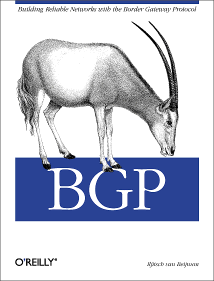
|

|

|
|
Home ·
BGP Expert Test ·
What is BGP? ·
BGP Vendors ·
Links ·
Archives ·
Books ·
My New BGP Book | ||
2010 IPv6 Address Use ReportThis page shows the amount of IPv6 space given out by RIR and by year, while this page shows the amount of IPv6 address space by country. Both these pages are updated weekly from the delegation data that the RIRs publish on their FTP servers. In 2010, twice as many IPv6 address blocks were given out as in 2009, adding up to 5.5 times as much address space (amounts of IPv6 address space in the equivalent of /32s):
1999 10.88 /32s in 17 blocks 2000 19.75 /32s in 32 blocks 2001 33.13 /32s in 61 blocks 2002 156.75 /32s in 271 blocks 2003 261.38 /32s in 290 blocks 2004 13340.63 /32s in 295 blocks 2005 26985.00 /32s in 245 blocks 2006 9798.00 /32s in 243 blocks 2007 6687.01 /32s in 491 blocks 2008 81012.02 /32s in 886 blocks 2009 1091.03 /32s in 1280 blocks 2010 5811.05 /32s in 2433 blocks (Note that if you look up the current numbers, those for the previous years are slightly different. This happens when address space is returned or the RIRs change their databases retroactively for other (unknown) reasons.) The large number for 2008 is the result of two unusual events. The first one is LACNIC's delegation of the 2804::/16 block to the Brazilian national internet registry (NIR). At some point in the future, the delegation records will not show such blocks as "used" in their entirety anymore. Also, ARIN delegated 14 /22 blocks within the range 2608::/13 to the US Department of Defense. In 2010, APNIC delegated a lot of space to JPNIC, Japan's Network Information Center. I'm making no further attempts to filter out these, but remember to take the amounts of address space given out with a large grain of salt because of these national institutions that subdelegate address space. So the number of blocks given out keeps increasing, but their size is going down. There are two reasons for this: roughly between 2004 and 2006, RIPE and APNIC gave out some very large blocks to some very large ISPs. They mostly stopped doing that. And provider independent blocks started to be allowed and are getting more and more popular. These are the /32 - /35 allocations. /32 is the minimum block size given out to ISPs, this used to be /35. So this view shows the numbers of small-to-medium sized ISPs obtaining IPv6 address space:
1999 11.00 /32s in 17 blocks 2000 20.00 /32s in 32 blocks 2001 33.00 /32s in 55 blocks 2002 157.00 /32s in 254 blocks 2003 223.00 /32s in 251 blocks 2004 235.00 /32s in 241 blocks 2005 217.00 /32s in 217 blocks 2006 186.00 /32s in 186 blocks 2007 351.00 /32s in 351 blocks 2008 734.00 /32s in 734 blocks 2009 1011.00 /32s in 1013 blocks 2010 1777.00 /32s in 1777 blocks This is the distribution of block sizes given out in 2010:
Prefix Number length 22 2 23 1 24 3 25 2 26 2 27 4 28 8 29 5 30 5 31 3 32 1777 38 1 40 3 41 1 42 7 43 4 44 18 45 6 46 8 47 12 48 561 The RIPE NCC is the RIR that gives out the most IPv6 blocks in 2010, although ARIN and APNIC aren't trailing too much behind:
afrinic 104.00 /32s in 55 blocks apnic 3241.01 /32s in 670 blocks arin 551.04 /32s in 610 blocks lacnic 46.00 /32s in 50 blocks ripencc 1869.01 /32s in 1048 blocks Even with the BR NIR, DoD and JPNIC blocks included, the (equivalent of) 45193.36 /32s given out in 6475 blocks is only 0.027% of the 536870912 possible /32s in the currently defined global unicast space (2000::/3). This is up from 0.026% a year ago. For comparison, the number of IPv4 blocks given out is 106636. Also see last year's IPv6 address use report. Comments or questions? Email me. |
